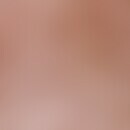Synonym(s)
DefinitionThis section has been translated automatically.
Sambuci flos, also known as elderflower, is a drug used in herbal medicinal products for the treatment of colds.
Quality is defined in the European Pharmacopoeia (Ph. Eur.).
HMPC monograph: Traditional-use: first symptoms of a cold
ESCOP monograph: diaphoretic for banal colds, fever, chills.
Commission e-monograph: colds
Empirical medicine: Induction of sweating cures, colds, feverish conditions, coughs, colds, laryngitis or flu, also as gargle. Also used to increase milk flow in women who have recently given birth. Efficacy not proven for these indications.
IngredientsThis section has been translated automatically.
Sambuci flos contains up to 3.5 % flavonoids, mainly rutin. Other ingredients are triterpenes, hydroxyphenylcarboxylic acids (including plenty of chlorogenic acid), up to 0.2 % essential oil, phytosterols and mucilage.
You might also be interested in
EffectsThis section has been translated automatically.
Sambuci flos has diaphoretic, antioxidant and immunostimulant effects, moreover, elderflower increases bronchial secretion. Inhibition of helicobacter adhesion to the gastric mucosa.
Field of application/useThis section has been translated automatically.
Sambuci flos is used for colds.
An infusion of 2 tablespoons of fresh (or 1 tablespoon of dried) flowers (the whole flowering umbels are cut) with 250ml of boiling water is recommended. Cover and leave to infuse for 8-10 minutes. Strain. Dosage: drink 3 cups daily.
Elderflowers can also be used as a bath additive.
DosageThis section has been translated automatically.
The average daily dose of the drug is between 10.0 and 15.0 g. It can be taken in crushed form as an infusion (1 to 2 cups of tea daily).
Undesirable effectsThis section has been translated automatically.
There are no known adverse effects.
ContraindicationThis section has been translated automatically.
Pregnancy and lactation, and children and adolescents under 12 years due to lack of data. Allergy to one of the ingredients
InteractionsThis section has been translated automatically.
There are no known interactions with other ingredients.
LiteratureThis section has been translated automatically.
- Schilcher H (ed.) in, Leitfaden Phytotherapie, Urban & Fischer Verlag (2016) Munich, p.159 f.
- https://arzneipflanzenlexikon.info/holunder.php
- https://www.ema.europa.eu/en/documents/herbal-monograph/final-european-union-herbal-monograph-sambucus-nigra-l-flos-revision-1_en.pdf
- https://pflanzen.fnr.de/industriepflanzen/arzneipflanzen/pflanzen-datenbank
- https://www.awl.ch/heilpflanzen/sambucus_nigra/holunder.htm
Blaschek W (2015) Wichtl tea drugs and phytopharmaceuticals. A handbook for practice. Wissenschaftliche Verlagsgesellschaft Munich. S 583-585




